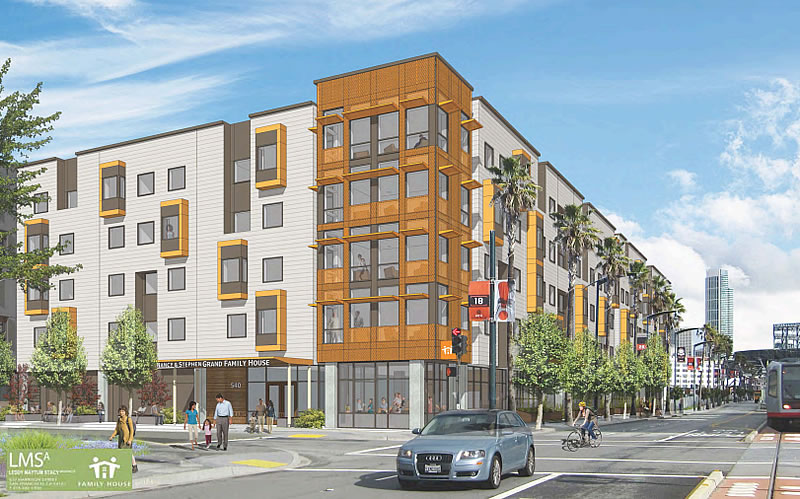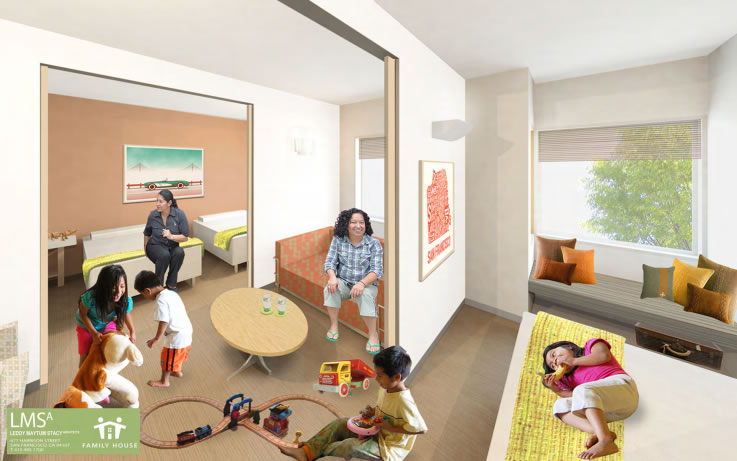With 200 units of affordable housing slated to soon break ground on the western three-quarters of Mission Bay Block 7, construction on a new 92,000-square-foot home for Family House is underway on the eastern quarter of the block, fronting Third Street between China Basin and Mission Bay Boulevard North.
Founded in 1981, Family House offers free, temporary housing to families of seriously ill children receiving treatment at the University of California San Francisco Benioff Children’s Hospital and helps more than 2,000 families a year.
Currently operating at near 100% occupancy out of two apartment-style buildings located near the UCSF Parnassus campus, with a combined 34 bedrooms and a maximum occupancy of 107 guests, Family House’s new Mission Bay facility will include 80 guest rooms, each with an en suite bathroom, and be able to house up to 250 people per night.
The Nancy and Stephen Grand Family House at Mission Bay should be ready for occupancy in early 2016.


Wow, that’s an impressively bad photoshop job.
Does anyone know what the requirements are for having to anchor these size structures into bedrock? I’m just realizing that this one basically sits pretty much on the surface.
Everything being built in Mission Bay has piles driven to bedrock anchored to the foundation.
From the article at namelink:
Mission Bay’s soil strata is far from uniform, and some buildings are easier to stabilize than others close by. That matters because pilings need to be sunk to bedrock.
“Some sites are better than others. With our Berry Street project, 50 percent of the piles we had to drive went 80 feet deep, and 50 percent were 150 feet deep. We got lucky on 50 percent of the site,” said Dan Deibel, Urban Housing Group’s development director. “On our 555 Mission Rock project, all the piles were 225 feet deep. Some developers have no piles at all.”
Urban Housing is a national market-rate apartment developer and its two buildings typify the challenges some developers face at Mission Bay. On its Mission Rock highrise, which will be complete in February, it had to drive 400 steel piles to compensate for unfirm soil. The steel piles are 50 percent more costly than concrete piles, but those were not an option at Mission Bay. Once concrete piles hit bedrock, they can’t be driven through. Steel can penetrate bedrock to stabilize the building.
On the $62 million building, 8 percent of the cost was for seismic considerations. In addition to the piles, Urban Housing had to compress the soil on the 1½-acre site by bouncing 3-foot-by-3-foot plates on the site to remove the liquefaction risk.
“Urban Housing had to compress the soil on the 1½-acre site by bouncing 3-foot-by-3-foot plates on the site to remove the liquefaction risk.”
Huh? I’ve heard of vibrating plate compactors but not “bouncing 3-foot-by-3-foot plates”. Could that just be a unintentionally cartoony way of describing a vibra-plate?.